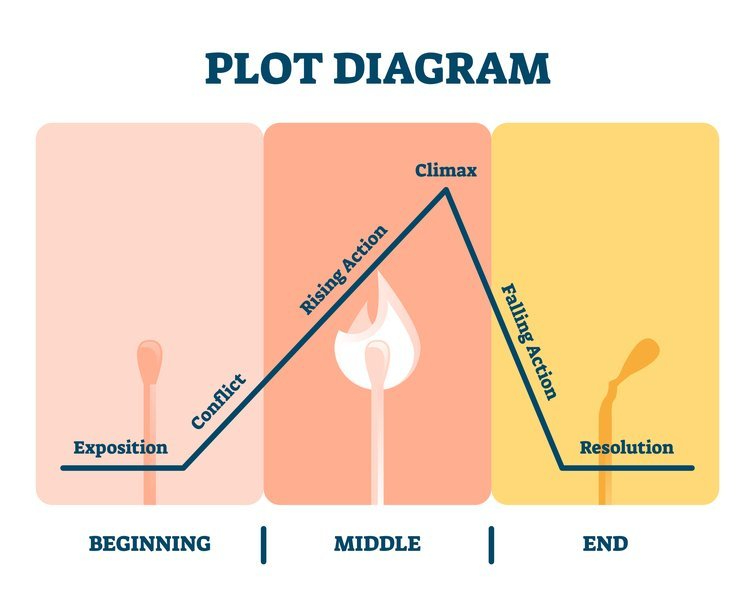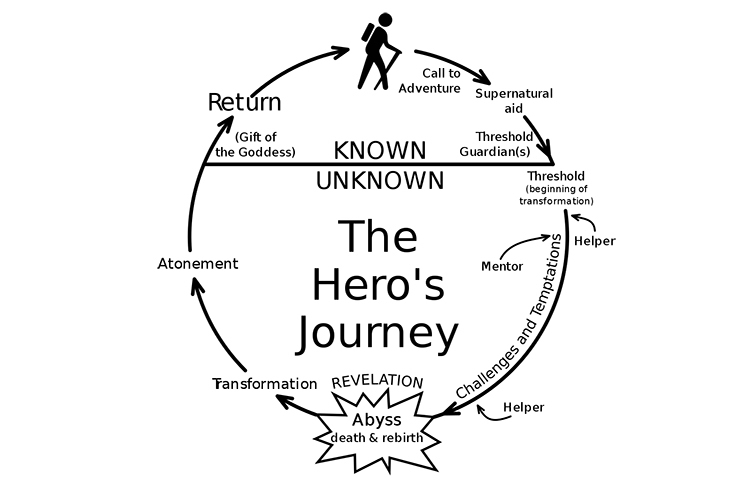
Understanding and Implementing Plot Structure for Films and Screenplays
Let’s explore the fundamentals of story and plot structure and how filmmakers can use these basics to create their own narratives.
They say a film is only as good as its script. Which is true, but I’d argue that it goes further than that. A good script is only as good as the plot — or the story at the center of it all. Screenwriters and filmmakers agree that it’s this central story that really develops, informs, and controls how you write your script, shoot your shots, and make those final edits.
But, what makes a good story? And, how do you structure the perfect plot for your films and screenplays? Let’s dive into the fundamentals of plot structuring and explore how you can use these basics to help tell your story through filmmaking.
What Are Plot and Story?
So, what is a plot? Looking into purely literary terms, a plot is simply: “The plan, scheme, or main story of a literary or dramatic work, as a play, novel, or short story.” Although, for our film purposes, it’s probably best to go with the functional definition: “The sequence of events where each affects the next one.” Basically, this just means the plot is what happens and in what order.
A story, on the other hand, is “an account of imaginary or real people and events told for entertainment,” which is slightly different in that it accounts for the sensational elements of things that may or may not have actually happened and are presented for entertainment purposes.
Both roughly mean the same thing. However, for the purposes of screenwriting and filmmaking, the plot represents the structure, while the story stands for the substance.
You can see the difference in the video above in which novelist Kurt Vonnegut outlines the “Shape of Stories” by giving a very systematic plot diagram, then explains how the story defines the emotions and how we connect with the different feelings contained within.
The Basics of Plot Structure

Image by VectorMine.
Plot structure is a smart way to plan and work with film, as the whole process is very methodical in how it’s created and presented from one shot to the next. It’s also important that we talk about just how fundamental plot structuring is to how we understand film. Of course, while there are experiments and outliers, the majority of all film projects follow some of the same basic plot structures.
The first — and perhaps most basic — plot structure is the three act structure. This is one of the oldest structures to any film, literature, or storytelling form, and it could be argued that it’s a part of the core building blocks of all other structures and stories. There’s more to read about the three-act, but the basics include:
- The First Act: Exposition and introduction to the crucial story elements.
- The Second Act: A problem is defined and confronted as the stakes are raised.
- The Third Act: The problem is solved with a climax and we have reflection.
What many would call the second most well-known plot structure would be Freytag’s Five Part Pyramid, which itself is based on early theories of story from the ancient Greeks. These five parts (sometimes six) might be familiar to anyone who’s dabbled in literature or art. The basics include:
- Exposition: An introduction of the protagonist(s), antagonist(s), and the stakes.
- Rising Action: A conflict is introduced and the protagonist’s journey begins.
- Climax: The protagonist faces off against the central antagonist/conflict in a battle.
- Falling Action: All the character’s actions are resolved and an outcome is reached.
- Denouement: The conflict is concluded and we see what happens to the characters in the future.
The Hero’s Journey Circle
From there, as we go further specifically into plot structure for film and entertainment, we move onto exploring the Monomyth and Joseph Campbell’s Hero’s Journey. This plot and story structure is as old as humankind itself and encompasses all the elements from before. It’s perhaps our most nuanced take on how stories are structured and the individual plot points you need to use (or at least understand) for your projects.
You can read more in depth on the Hero’s Journey as it regards to filmmakers, but let’s go over some of the important tenets including the three basic parts:
- The Departure
- The Initiation
- The Return

Image via Wikipedia.
Sounds similar to the three-act structure, right?. However, the Hero’s Journey has more steps within (see below). Additionally, it can be perceived not as a linear line (like the prior examples), but actually more of a comprehensive circle that brings the audience back to where the story began.
- The Ordinary World
- The Call to Adventure
- Refusal of the Call
- Meeting with the Mentor
- Crossing the Threshold to the Special World
- Tests, Allies, and Enemies
- Approach to the Innermost Cave
- The Ordeal
- The Reward
- The Road Back
- The Resurrection
- Return with the Elixir
Examples of Plot Structure
Once you understand these basic plot structures and can trace the iconic Hero’s Journey, it becomes a fun exercise in critical analysis, as well as an interesting look into the decision making of writers and directors, as we’re all tasked with taking these building blocks and creating unique and powerful stories.
As you can see in the examples below, these plot structures can actually be very recognizable when you start to break down some of your favorite films and franchises.
Harry Potter
Empire Strikes Back
Dead Man’s Chest
But, just because you can recognize a film’s essential plot structure, it still begs the question: How can you use plot structure for your projects? Let’s take a look at some of the different approaches.
Different Approaches for Filmmakers
So, this is where plot structure gets really fun. At this point in film and art history, we’ve very successfully broken down plot structure to these fundamental elements and are able to understand how and why these classic structures work. It also means that we’re really only now able to come up with our own ideas as to how we want to work with the structures — or, at times, against them.
As you can see above, Dan Harmon is a perfect example of this as he’s been able to develop his own version (of sorts) of the Hero’s Journey with his unique “Story Circle,” which includes all the elements, but is tailored to his own understanding and specific needs for television writing and episodic comedy.
It really becomes up to you — as a screenwriter and/or filmmaker — to take these structures for what they are: building blocks to your story. You can choose which structure or format that’s best for you and your narrative, as well as decide at what point you might want to deviate from the structured norms to create unease or excite wonder in your audience and their formulaic expectations.
For more film theory and helpful screenwriting content, check out these handpicked resources:
- Bending the Rules of the Three-Act Structure
- A Guide to Structuring Your Scripts and Screenplays
- “Watchmen” and The Art of Creating Nonlinear Stories
- How to Write a Documentary Treatment
- 5 Important Tools Every Screenwriter Should Have
Cover image from Harry Potter and the Sorcerer’s Stone via Warner Bros.





